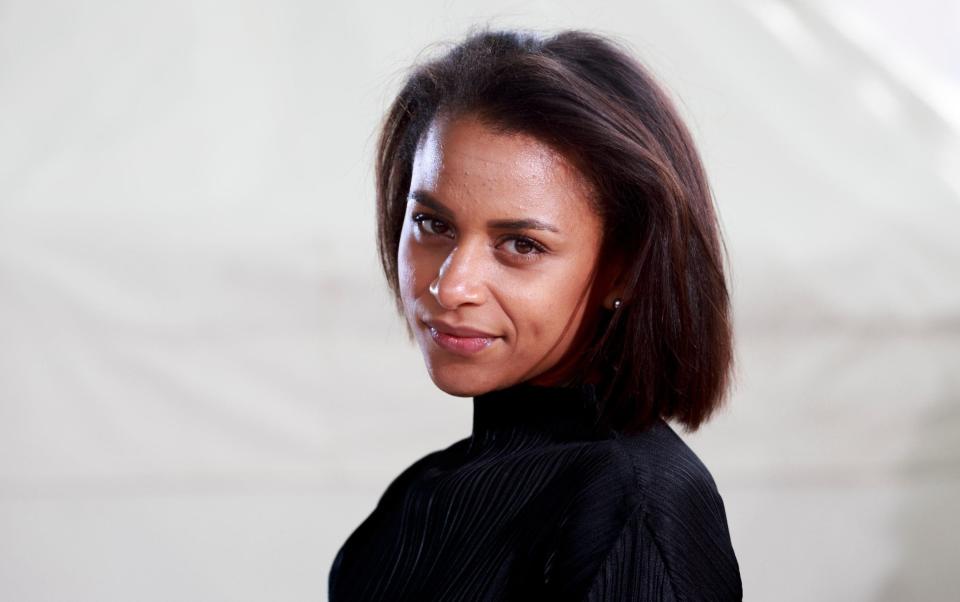From a lightsaber’s whoosh to The Archers’ squelch, sound effects change the way we hear – and see

Ah, the unmistakable crackle of a campfire on a summer evening. Or is it, in fact, a foley artist called Ruth Sullivan crinkling some plastic between her fingers? In Archive on 4: Knock Knock: 200 Years of Sound Effects (Saturday, Radio 4), the composer and sound designer Sarah Angliss led a journey through the making of artificial sound.
Beginning with Thomas De Quincey’s 1823 essay On the Knocking at the Gate in Macbeth, she traced an aural path from stage directions all the way to the man who came up with the sound of lightsabers, and the contemporary natural history sound artists who breathe icy whistling winds over footage of the Arctic tundra. Radio drama was an important part of the story. Angliss heard how early BBC sound effects techniques were kept in top secret manuals. It was thought that if word got out to the public of all the fakery that went on behind the creation of the sounds of various types of car engine, for instance, the whole effect would be ruined. Nowadays, the BBC Sound Effects archive is freely available online, and it’s an open secret that every time you hear the squelch of wellies through mud in The Archers it’s all the audio equivalent of smoke and mirrors.
What was so interesting about Angliss’s programme was that, unlike elaborate stage magic tricks, learning how sound effects are made actually doesn’t spoil the effect at all. Even when you know a fire is really crinkling plastic, you can still hear the fire. It was fascinating to learn that SFX designer Ben Burtt, who created the otherworldly sounds for the Star Wars films, came up with the distinctive motion-sensitive buzz of the lightsaber by recording the sounds made by his TV set and projector, combining them, and then re-recording them using a microphone that he waved around the studio.
For Sullivan, her background as a dancer gave her a sense of rhythm and attention to detail that are fundamental for the making of sound effects. She described watching a silent filmed scene and adding in footsteps on stone, characterful door knocks, the ever-so-slight shifting noise that a stiffened shirt collar makes when its occupant turns his head in surprise. In Bristol, natural history sound editor Kate Hopkins had something of the Wizard of Oz about her, constructing evocative, completely believable natural settings.
Recorded wind sounds are crucial, she said, for texturing empty landscapes such as snowy wastes, or endlessly stretching savannahs. The different pitches and resonances of winds make us feel the temperature without even realising it. The sound of a Siberian blast can make you shiver, while the winds of a hot, sandy desert can almost make you squint your eyes against the dust. Forests full of insect life and birdsong can be tricky. If she used archive sound of rainforest that contained a call of a bird not native to the particular area in the filmed footage, a bird-loving viewer was bound to write in and point it out.
Underwater, Hopkins could be more creative: the sounds here can be pulsating, bubbling, almost like music, and still feel real. The greatest compliment Hopkins receives is when a producer who had filmed the original footage says to her: “This is exactly what it felt like when I was there.” Knock Knock was perfect radio: atmospheric, discombobulating and bordering on an interactive sensory experience. The sound artists showed how sound can have a domino effect on the rest of our senses, altering how we taste, smell, touch and see. It was a thrilling argument for the power of sound and how it can deceive and seduce.

There wasn’t much discussion of erotic sounds, however. Creating the sound of a kiss, particularly on radio, without ickiness must be a perennial challenge. How do writers manage to convey that powerful but essentially wordless human interaction? In an early warm-up to Valentine’s Day, the poet Rachel Long presented A Kiss (Thursday, Radio 4), a literary exploration of how poets put kissing on the page. The central thesis of the programme was that a good kiss is like a good poem: impossible to paraphrase or experience in any other way.
There were readings of poems of varying quality, but, strangely, most of the poets were more eloquent about the topic when they were talking around it, rather than reading their work. Maybe some experiences really do exist beyond sound and word. The most memorable part of A Kiss was a tiny moment of connection, when Long, who is in her thirties, tentatively asked Fleur Adcock, who is in her eighties, whether kisses get better with age. Adcock laughed and replied, after a slight hesitation: “Wait and see.”

